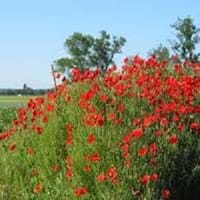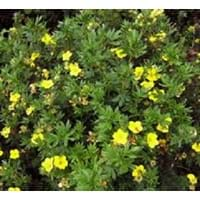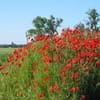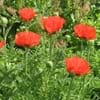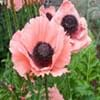Life Span
Perennial
Perennial
Type
Flowering Plants
Perennial
Origin
Europe
Not Available
Types
Not Available
Abbottswood Potentilla
Day Dawn Potentilla
Goldfinger Potentilla
Pink Beauty Potentilla
Snowbird Potentilla
Number of Varieties
Not Available
Habitat
gardens, Grassland, Tropical regions, Urban areas
gardens, Grassland, Homesteads, Open areas
USDA Hardiness Zone
5-8
3-8
Sunset Zone
1a, 1b, 2a, 2b, 3a, 3b, 4, 5, 6, 7, 8, 9, 14, 15, 16, 17
A1, A2, A3, H1, H2, 1a, 1b, 2a, 2b, 3a, 3b, 4, 5, 6, 7, 8, 9, 10, 11, 12, 13, 14, 15, 16, 17, 18, 19, 20, 21, 22, 23, 24
Habit
Clump-Forming
Not Available
Minimum Height
Not Available
Minimum Width
Not Available
Flower Color
White, Yellow, Red, Orange, Light Yellow, Lemon yellow, Light Pink, Rose, Salmon, Coral, Peach
Not Available
Flower Color Modifier
Bicolor
Not Available
Fruit Color
Not Available
Not Available
Leaf Color in Spring
Gray Green
Not Available
Leaf Color in Summer
Gray Green
Not Available
Leaf Color in Fall
Gray Green
Not Available
Leaf Color in Winter
Not Available
Light Green
Plant Season
Spring, Summer
Not Available
Sunlight
Full Sun
Full Sun, Partial Sun
Growth Rate
Fast
Not Available
Type of Soil
Loam, Sand
Not Available
The pH of Soil
Acidic, Neutral
Not Available
Soil Drainage
Well drained
Not Available
Bloom Time
Late Spring, Early Summer, Summer
Summer, Late Summer, Early Fall
Repeat Bloomer
Yes
Not Available
Tolerances
Not Available
Drought
Where to Plant?
Ground, Pot
Ground, Pot
How to Plant?
Seedlings, Transplanting
Stem Planting
Plant Maintenance
Medium
Medium
Watering Requirements
Does not require lot of watering, Water occasionally
Water Deeply, Water when soil is dry
In Summer
Lots of watering
Lots of watering
In Spring
Moderate
Moderate
In Winter
Average Water
Average Water
Soil pH
Acidic, Neutral
Not Available
Soil Type
Loam, Sand
Not Available
Soil Drainage Capacity
Well drained
Not Available
Sun Exposure
Full Sun
Full Sun, Partial Sun
Pruning
Remove damaged leaves, Remove dead branches, Remove dead leaves
Prune if you want to improve plant shape, Prune in winter, Prune to control growth, Remove damaged leaves, Remove deadheads, Requires little pruning
Fertilizers
All-Purpose Liquid Fertilizer
All-Purpose Liquid Fertilizer
Pests and Diseases
Red blotch
Red blotch
Plant Tolerance
Drought
Drought
Flowers
Showy
Not Available
Flower Petal Number
Single
Not Available
Showy Fruit
No
Not Available
Edible Fruit
No
Not Available
Fragrant Flower
No
Not Available
Fragrant Fruit
No
Not Available
Fragrant Leaf
No
Not Available
Fragrant Bark/Stem
No
Not Available
Showy Foliage
No
Not Available
Showy Bark
No
Not Available
Foliage Texture
Fine
Not Available
Foliage Sheen
Matte
Not Available
Invasive
No
Not Available
Self-Sowing
Yes
Not Available
Attracts
Not Available
Not Available
Allergy
Skin irritation
Not Available
Aesthetic Uses
Showy Purposes
Showy Purposes
Beauty Benefits
Not Available
Not Available
Environmental Uses
Air purification
Air purification
Medicinal Uses
Used as a sedative
Curing infectious diseases, Improve heart health, Lung Problems, Treatment of ulcers
Part of Plant Used
Whole plant
Not Available
Other Uses
Used as Ornamental plant
Showy Purposes
Used As Indoor Plant
Yes
Yes
Used As Outdoor Plant
Yes
Yes
Garden Design
Alpine, Container, Cutflower, Mixed Border, Rock Garden / Wall, Wildflower
Not Available
Botanical Name
PAPAVER alpinum
POTENTILLA cinerea
Common Name
Alpine Poppy
Abbotswood Potentilla
In Hindi
अल्पाइन पोस्ता
Potentilla Abbotswood
In German
Alpine Mohn
Abbotswood potentilla
In French
Alpine Poppy
Abbotswood potentille
In Spanish
Alpine amapola
Abbotswood Potentilla
In Greek
Alpine παπαρούνας
Abbotswood Potentilla
In Portuguese
Alpine Poppy
Abbotswood Potentilla
In Polish
Alpine Poppy
Abbotswood Potentilla
In Latin
Alpini Poppy
Abbotswood Potentilla
Phylum
Not Available
Not Available
Class
Dicotyledonae
Not Available
Order
Ranunculales
Rosales
Family
Papaveraceae
Rosaceae
Clade
Angiosperms, Eudicots
Angiosperms, Eudicots, Rosids
Tribe
Not Available
Not Available
Subfamily
Paperveroideae
Rosoideae
Number of Species
Not Available
Season and Care of Alpine Poppy and Abbotswood Potentilla
Season and care of Alpine Poppy and Abbotswood Potentilla is important to know. While considering everything about Alpine Poppy and Abbotswood Potentilla Care, growing season is an essential factor. Alpine Poppy season is Spring and Summer and Abbotswood Potentilla season is Spring and Summer. The type of soil for Alpine Poppy is Loam, Sand and for Abbotswood Potentilla is Not Available while the PH of soil for Alpine Poppy is Acidic, Neutral and for Abbotswood Potentilla is Not Available.
Alpine Poppy and Abbotswood Potentilla Physical Information
Alpine Poppy and Abbotswood Potentilla physical information is very important for comparison. Alpine Poppy height is 10.20 cm and width 10.20 cm whereas Abbotswood Potentilla height is Not Available and width Not Available. The color specification of Alpine Poppy and Abbotswood Potentilla are as follows:
Alpine Poppy flower color: White, Yellow, Red, Orange, Light Yellow, Lemon yellow, Light Pink, Rose, Salmon, Coral and Peach
Alpine Poppy leaf color: Gray Green
Abbotswood Potentilla flower color: Not Available
- Abbotswood Potentilla leaf color: Not Available
Care of Alpine Poppy and Abbotswood Potentilla
Care of Alpine Poppy and Abbotswood Potentilla include pruning, fertilizers, watering etc. Alpine Poppy pruning is done Remove damaged leaves, Remove dead branches and Remove dead leaves and Abbotswood Potentilla pruning is done Prune if you want to improve plant shape, Prune in winter, Prune to control growth, Remove damaged leaves, Remove deadheads and Requires little pruning. In summer Alpine Poppy needs Lots of watering and in winter, it needs Average Water. Whereas, in summer Abbotswood Potentilla needs Lots of watering and in winter, it needs Average Water.
